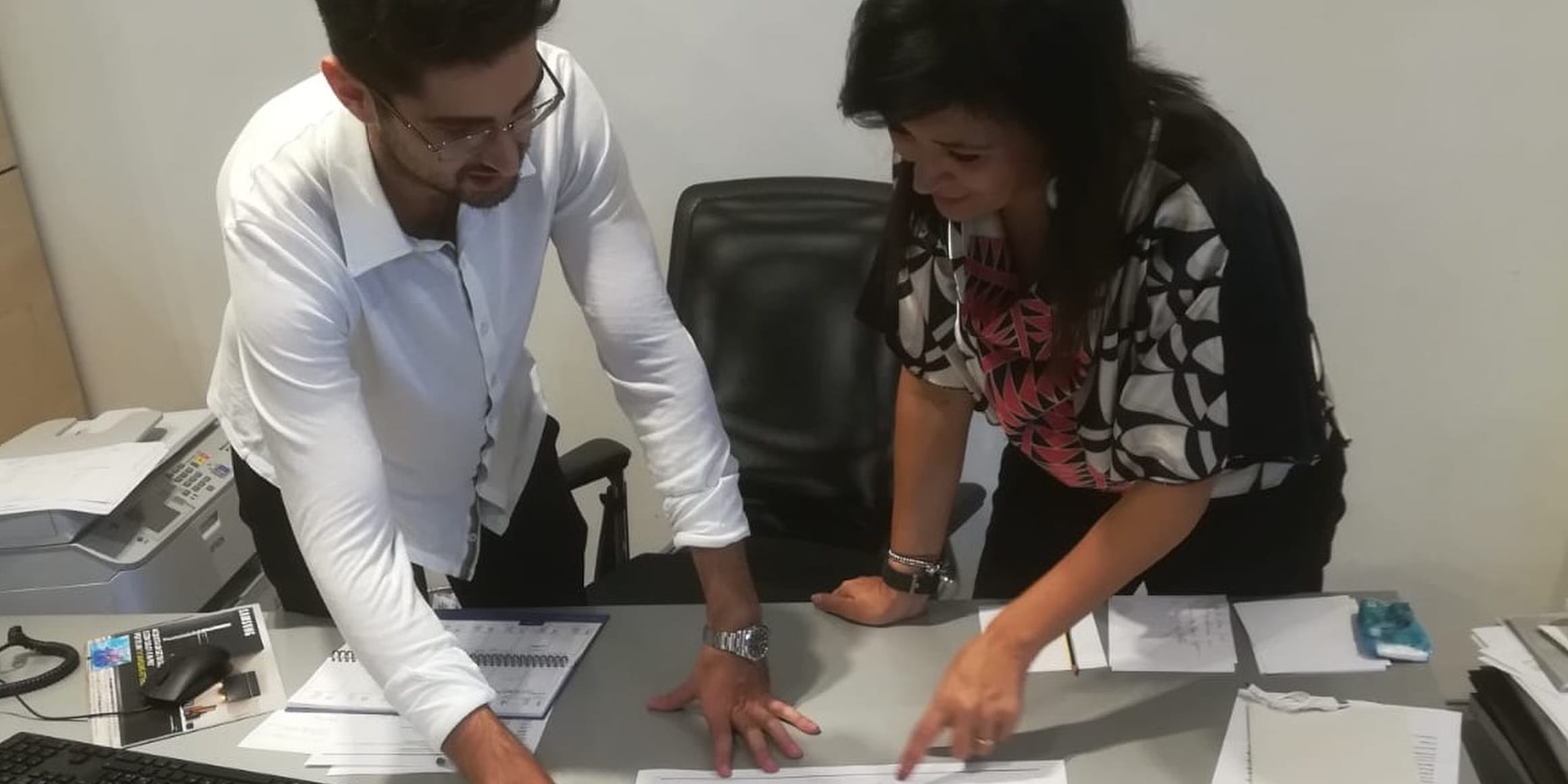
Can you standardize creative work?
FEATURE – The belief that standards kill creativity can be a severe hindrance in a lean journey. The author discusses how he convinced his team of architects to give standards - and lean management - a try.
Words: Alessandro Piccolo, Innovation and Operations Manager, Pierre Home - Italy
After three years spent on the field as a lean coach, in January 2018 I started to manage a small firm specializing in interior design for contemporary homes. In my new role, I had the opportunity – and, crucially, the authority – to improve the work using the lean capabilities I had developed.
Any improvement methodology we can adopt in a business is based on the repeatability of processes, and therefore on standardization. With this in mind, the first thing I planned to do was creating a standard for all our architects.
In our environment, each architect has their own experience, developed over time by dealing with clients and learning from more experienced colleagues. This means that each of them has a different way of working, different criteria to determine how a project should be managed, and a different approach to analyzing customer requirements. In a way, each of them is a standalone business unit.
This of course creates a lot of waste, because all the knowledge acquired by the architects is never really shared, and makes operational improvements impossible because everyone follows a different process.
I strived to tackle this situation on our first lean meeting. Two hours in, people seemed perplexed by the idea of establishing a single working method for everyone. We interrupted the meeting when one of them raised the question, “Do you really want to put a time to creativity?”
DEBUNKING THE CREATIVE WORK MYTH
On a Saturday afternoon this past February, I was sitting in my living room thinking of how I could convey the message to my people that standardization and creativity can coexist. I was with my brother Angelo, who is two years my junior and works as a professional techno music DJ. I thought that a purely artistic profession like a DJ might just help me.
I asked Angelo whether he considered his job to be a creative profession. A little taken aback, he replied: “Of course it is!” I then asked him whether he used any sort of repeated procedure – or standard – in his work. I could tell he was about to say, “No.” But then he stopped to think for a second. He started to reflect out loud on how, as a humanities student, he had learned that every author (whether they were writing poetry or prose) followed specific linguistic structures. Needless to say, Angelo and I delved deeper into the subject.
Every time I get home, I see my brother standing by his equipment and listening to music tracks with headphones wrapped around his head. So, I decided to start our discussion there. Each day, Angelo spends a few hours researching and looking for tracks for his library. But does he use a specific process to do so?
It turned out he does: there are certain websites he routinely visits and he listens to music following a specific pattern. Each time he finds a track that matches his taste and needs (and those of his audience), he visits another site to find all the tracks from the same album. If he finds something interesting, he then buys the vinyl and adds it to his library. In this part of his job, the creative work lies in the selection of tracks – the “tiles” that will make up the “mosaic” of his performance.
When he prepares a live event, he follows a different set of rules. In particular, he selects a couple of tracks he will use to open the show, based on the place and time he is playing at and on the audience in front of him. Angelo also carries around a selection of some 200 vinyls: based on the feedback he receives from the audience on the opening tracks, he decides what he is going to play that night (he knows what “tiles” he has in his library because of the selection work he has done previously).
So, even artists follow a process in order to reach the desired level of performance in their work!
There is another example of creative profession that few people would associate with standardization: the star chef. While it is true that chefs express their incredible creativity in the kitchen, we must also remember that it is not them who cook dishes in all of their Michelin-star restaurants (imagine Jamie Oliver frantically running from a restaurant to another to check on his dishes), but a number of highly-trained professionals who can prepare food that meets the high standard expected.
Much like a DJ, the star chef does the research work and then standardizes the cooking process so that his incredible dishes will be replicable every time with the same result.
Clearly, standardization is a necessity for everyone, no matter how creative their jobs might be!

HOW MUCH CREATIVITY IS THERE IN INTERIOR DESIGN?
After sharing these examples with my colleagues, I agreed with them that a process common to all architects and interior designers was indeed possible to identify. But what to standardize? And where to start?
In the examples above, there is a clear distinction between the moment the product is imagined and the moment it is developed and “sold”. The whole process is based on an analysis, whose subjective considerations represent the creative part of the work.
We can follow a similar approach with interior design, clearly distinguishing the research phase (during which the “tiles” that will go and create our product are identified) from the execution phase.
Before I tell you about the system we have come up with, however, let me explain the nature of our work. Here's how things typically unfold in our business:
- The client discusses her requirements with the architect.
- Based on these requirements, the architect comes up with a solution that ensures the functionality of the living space and takes into the account the products that will be used there.
- After further discussion with the client, the finishing touches to furniture and other decorative elements are determined.
In order to do all this, the design needs to have a method to analyze requirements, develop a rough concept of the project, study the space at hand to decide how to organize it, know the products that will populate the space, and know the project-related limitations of different decorative options. These are the “tiles” that every architect will rely on.
TRYING TO SOLVE THE CONUNDRUM
Now, let me share with you some of the solutions we have come up with in the past six months to try and create standards in the work of architects.
- Style book
Every project starts with an idea of the look a living space should have. Architects believe this all comes down to creativity and that no standard can be identified. Nevertheless, over the course of a kaizen event we were able to see how we can categorize different types of space. We identified around 20 “model spaces”, to which we are able to connect every living space we see online or on magazines. Now, before starting a project, the architect has a tool to rely on, a starting point to define the look he or she wants and to get inspiration from. For each model space, we have created a “mood board” – a combination of materials and color palettes that we can use to achieve a specific visual effect. Architects can then adapt this to the specifics of her project.
- Sourcing book
An analysis of our projects revealed that each professional tends to use specific furniture brands. Given the huge number of furniture firms in our catalogue and the difficulty of remembering their products, we decided to create a sourcing book, in which we have inserted and categorized each brand’s products. This gives the architect a quick overview of all the products she might use in the project.
- Design standards
Once the style of the living space is determined, we begin with the organization of the different elements that will decorate it. Up until recently, each architect had her own way of organizing the space and placing different items, based on her previous experience. These solutions, too, are possible to standardize. For instance, there are a number of ways to organize the space in a bathroom, including physical dividers (like steps, panels or ledges) and visual dividers (like false ceiling heights or differences in colors, materials or finishings).
These predefined solutions represent our design standards – a collection of ideas on how to organize the different elements in a room. This body knowledge works as a supermarket, from which the architect can get the solution that best suits the client’s needs, without having to start from scratch each time. Standards are continuously reviewed, as new solutions and ideas are developed and added to the list.
DO STANDARDS KILL CREATIVITY?
There is no doubt the standards we have created up until now are helping architects in their work. Yet, the choice on how to use the different tiles is still theirs. This is our way to marry standardization and creativity. However, we have found that, because these decisions are not logical but have a strong artistic component, it is important for the business to have a clear idea of the direction to pursue. In our case, therefore, the final decision on project standards are validated by an art director.
The results we have achieved so far prove unequivocally that we are onto something. For the planning of a single room project, for example, our standard lead-time has decreased from 3 days of work to 0,5-1 days of work.
The mechanics of waste reduction in our firm are closely tied to our ability to avoid rework: prior to lean, architects had to start each project from zero and do a new drawing. In the event of a problem, they had to change the whole thing. We also wasted a lot of time in the rendering phase, when we select colors and materials. This is now improving.
We have learned that standardizing the work of our architects has very positive implications on our onboarding process: my estimation is that we have cut in half the amount of time we need to turn a junior architect into a specialist in decorating living areas (which historically ranged between four and eight months).
There is much room for improvement in our firm, and I look forward to sharing our progress with you in the coming months.
THE AUTHOR

Read more


WOMACK’S YOKOTEN – This month, the author looks at the production line, a century-old idea that still fascinates us, reflecting on how lean thinking has changed it.


OPINION – When thinking about Barcelona, most of us think of Gaudí’s architecture, tapas and beach weather, but the Catalonian capital might also be a worthy example of lean principles applied to city management.


VIDEO INTERVIEW - At the Lean IT Summit, we spoke with Amazon Web Services to understand what type of flexible and scalable IT infrastructure allows organizations to be innovative without breaking the bank.


FEATURE – To get the results we want from a system, or prevent it from generating undesirable events, we need to understand how it works and behaves in the real world. That’s exactly what Jidoka does.

